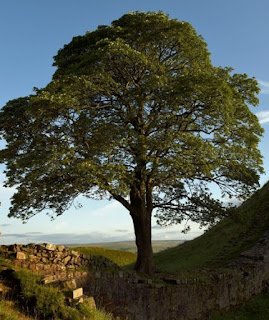Yes, you may have felt the urge to measure a tree but do you really know how to go about it?
The Woodland Trust have produced a definitive guide on the subject covering all types, shapes and species of woodland and individual trees as part of their quest to increase awareness on their landscape value and ecological importance particularly for trees of Ancient Status.
A few prolific measurers have emerged in history with their life's work being to gather as many examples as possible. Alan Mitchell, the co founder of The Tree Register of the British Isles is said to have measured more than 100,000 trees in just over 40 years.
There is a standard point on the trunk of a tree for a valid measurement and that is at a height of 1.5 metres from the ground.
This should be, if on sloping ground, from the highest part of the surroundings. This is subject to a brief look to see if there has been any unusual ground disturbance or erosion which could give a wrong recording.
If the tree happens to be on a bit of an angle which can occur if poorly planted, wind-damaged or in ill health then the point of measurement is to be taken on the underside.
In the case of a fork in the tree or where the trunk is abnormally swollen then the smallest measurement below 1.5 metres should be taken and a note made of the actual height from the ground.
With small or very low branches you may have to negotiate the tape measure above the growths although attempts should always be made to get as close as possible to the magic 1.5 metres.
Some trees can be twinned or double stemmed they should be treated as a single and individual tree.
A clump of trees are of value to the recording process as some can be of ancient status and worthy of close study.
The measuring of a tree gives it an identity and helps to highlight its importance as perhaps the largest of its type in its local area. Without historical references for the vast majority of trees it is important to help estimate age. Those in the Natural Sciences and Ecology can use the data to assess growth rates as well.
If you cannot physically get to a tree, for example it might be on private property, in a hazardous location or on the opposite side of a ditch or stream you may have to make an estimate.
A useful way to measure is in "hugs".
This involves an actual embrace of the trunk with one hug being the equivalent of 1.5 metres.
It is helpful to have others with you to do the hugging and that makes it so much easier and a lot of fun.
So get out there and get on with it.
Your records can be uploaded to the site
www.ancient-tree-hunt.org.uk



No comments:
Post a Comment